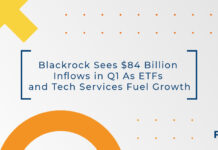OpenAI introduced smaller AI models known as embeddings, which aid applications in understanding the connections between various contents.
OpenAI has released new models, including an updated GPT-4 Turbo preview model, and it has dropped the price for GPT-3.5 Turbo application programming interface (API) access. The company has also introduced new ways for developers to manage API keys and understand API usage.
In a blog post, OpenAI said the updated GPT-4 Turbo “completes tasks like code generation more thoroughly than the previous preview model and is intended to reduce cases of ‘laziness’ where the model doesn’t complete a task.”
OpenAI said it is also introducing a new GPT-3.5 Turbo model, gpt-3.5-turbo-0125, and for the third time in the past year, it will be decreasing prices on GPT-3.5 Turbo to help its customers scale. The input prices for the new model are reduced by 50% to $0.0005 per thousand tokens, and output prices are reduced by 25% to $0.0015 per thousand tokens.
Complaints surfaced among ChatGPT users in December 2023 about the chatbot often declining tasks, blaming the lack of updates to GPT-4. While users of GPT-4, which uses data available before September 2021, may still experience the same laziness issues, GPT-4 Turbo was trained on information as recent as April 2023.
Advertisement
BlockShow by Cointelegraph is back with a crypto festival in Hong Kong, May 8-9 – Secure Your Spot!
OpenAI introduced smaller AI models known as embeddings. OpenAI defines embeddings as sequences of numbers representing concepts in content like language or code.
Embeddings are a kind of AI tool that helps computers understand and use written text more effectively. They do this by converting words and sentences into a format that computers can process. Imagine embeddings like a translator that turns human language into a special code that computers can understand and work with.
Retrieval-augmented generation is a type of AI that, instead of creating answers from scratch, provides more accurate and relevant responses. It’s like having an AI that quickly looks up a reference book instead of guessing an answer and tells you what it finds.
Two new models that use these embeddings are currently available: “text-embedding-3-small” and a more powerful version called “text-embedding-3-large.” The “small” and “large” refer to the capacity of these models. The large model is like a more comprehensive translator — it can understand and convert text more sophisticatedly than the “small” one. These models are now available for use in applications that need to retrieve and use information efficiently.
In simpler terms, these new tools are like smarter and more efficient computer translators, helping them understand human language better and quickly find the information they need from large databases. This leads to more accurate and helpful responses when interacting with AI systems.
OpenAI’s GPT-4 has competition from other artificial intelligence (AI) models like Google’s Gemini. Gemini beat GPT-4 in its ability to perform advanced math and specialized coding. However, some have argued that scores could be different if the advanced model of Gemini were tested against the GPT-4 Turbo.
OpenAI also plans to introduce a way for GPT creators to monetize their personalized AI systems. U.S. builders will be paid based on user engagement with their GPTs as a first step. However, the GPT store will be rolled out to users on paid ChatGPT plans first.
Source: Cointelegraph.com




